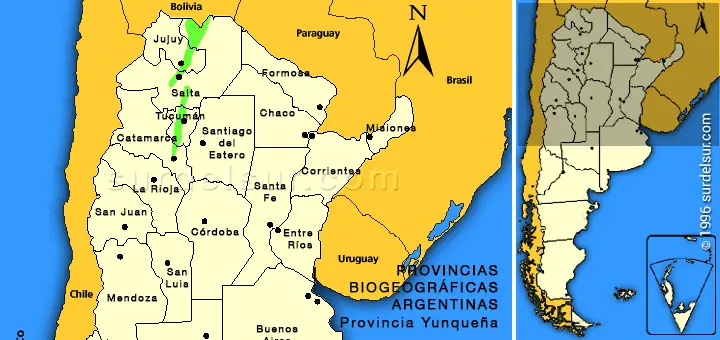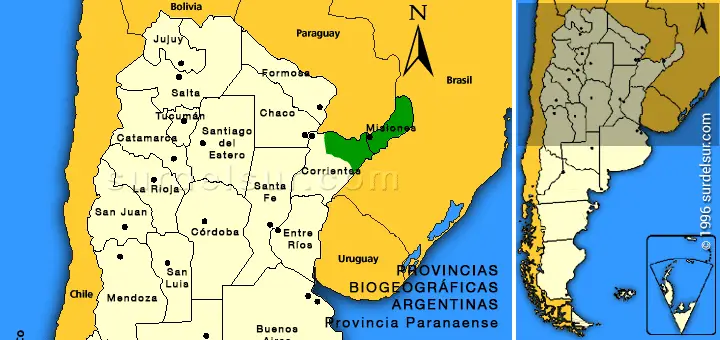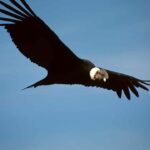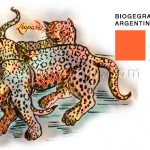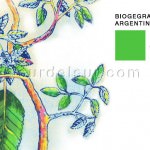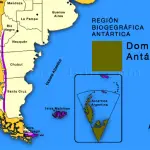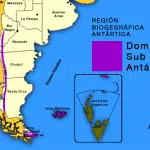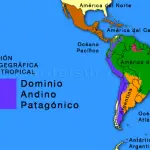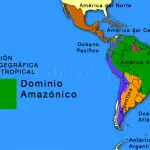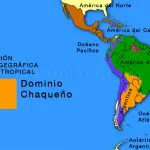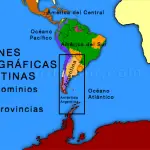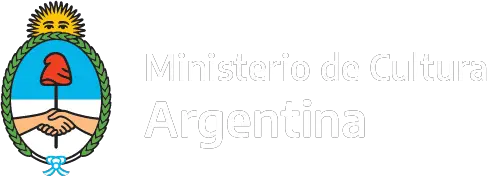The Amazonian Domain widely spread in South America, it has been divided into nine provinces. In Argentina it is marginally represented only in the North-west, along the pre-cordilleran mountains (corresponding to the Yunga Province) and in the North-east, covering Misiones and the North-east of Corrientes (corresponding to the Paranaense Province).

Article of the guest columnist, Esteban O. Lavilla y Juan A. González for surdelsur.com
See all reports about Biogeography of Argentina >>
Argentine Amazonian Domain
The Amazonian Domain is part of the Neotropical Biogeographical Region of Argentina, along with the Chaco Domain and the Andean-Patagonian Domain.
Yungas Province
Yunga Provinces is part of the Amazonian Domain. It encompasses the Argentina Provinces of Jujuy, Salta, Tucumán and Catamarca. It spreads in the form of a north-south band on the eastern sides of the Argentine north-eastern mountain ranges. It is bounded by the Chaco Province in the east and by the Pre-Puna or Puna Provinces in the west.
Climate
Warm and humid, with mainly summer rainfalls which may reach 2500 mm (98.42 inches) per year (as much as 3000 mm or 118.11 inches, in some regions). It may snow in winter.
Landscape
Mountains sides and piedmont undulating plains; soils with three typical, predominantly acid horizons.
Vegetation
It generally looks like a dense jungle.
Communities
From the point of view of the flora, the Yunga Province has been divided into three large districts:
Transition Jungle District: It covers the piedmont undulating plains and low slopes, between 350 m (1148 feet) and 500 m (1640 feet). In the northern region the prevailing species are palo blanco, palo amarillo, guayabí, red cebil, horco-cebil, white tipa, quina, cedar, urundel, pink lapacho, etc. Southwards on (Salta – Tucumán), the prevailing species are white tipa, pacará or timbó and red cebil.
The region has been deeply altered by human activities, and the crops have almost completely replaced the jungle.
Mountain Jungle District: It covers the slopes between the 500 m (1640 feet) and 1,200 m (3937 feet). It is a region with a very dense shady and humid vegetation. In the upper arborous stratum (over 30 m or 98 feet) there are laurel, horco molle, various types of cedars, walnut tree, mato, horco-mato, etc. The middle stratum (up to 20 m or 66 feet) includes chalchal, palo luz, cochucho, oak and hackberry tree. Moreover, there is a shrubby stratum, a herbaceous stratum, a group of plants growing above ground and a great diversity of lianas and epiphytes.
Several types of wood are logged in the region: cedar, oak and walnut tree, among others, and in some others areas the pine crops are replacing the jungle.
Mountain Forest District: It encompasses the higher mountain sides, between 1000 and 2300 m (3280 and 7546 feet). There are three types of forests, including the cerro pine, with an irregular distribution between 1100 and 1700 m (3609 and 5577 feet), the alder forest, between 1100 and 2400 m (3609 and 7874 feet) and the queñoa forest, between 1900 and 2300 m (6233 and 2300 feet), which can reach the 3000 m (9842 feet).
Fauna
The Yunga fauna shares some species with the Chaco Province, which bounds it in the east and shows similarities with the Paraná fauna, although more impoverished. The mammals, birds and amphibians are specially remarkable whereas there are less fish and reptiles.
Mammals: Tapir, corzuela, taruca, ant bear, little anteater, yaguareté, caí monkey, big ferret, mayuato, coendou, tapití, red squirrel, agutí, numerous types of bats, some armadillos, certain marsupials, etc.
Birds: Pava del monte, burgo, surucuá, pama eagle, red head chululú, partridge-pigeon, pijuí, big batará, various parrots, various toucans, boyeros, woodpeckers, humming birds, etc.
Reptiles: Culebras (small non-poisonous snakes) and lizards, even though present in the region, are comparatively little numerous in relation to the number found in the case of neiboring provinces.
Amphibians: Some endemic species are among the most important ones, such as the three Argentine species of marsupial frogs, the red belly toad and the frogs with direct development.
Fish: Various types of mojarras, virolo, eel catfish, madrecita, tararira, vieja de agua, dientudo, big catfish, limpiavidrios, yusca, etc.
Human Activities
Extensive livestock raising, wood development, agriculture (sugar cane single crop farming in the piedmont plains), horticulture.
Paraná Province
The Paraná Province belongs to the Amazonian Domain. Inside Argentina occupies Misiones and north-east of Corrientes, extending beyond the boundary lines in the territory of neighboring countries of Paraguay and Brazil.
Climate
Warm and humid, with rainfalls all year round; in some places there are rainfalls of 2000 mm (78.74 inches) per year. The average temperature varies between 20º and 21ºC (68º and 69.8º F).
Landscape
This is a landscape characterized by low sierras and plains. The characteristic soils are red and acid.
Vegetation
The prevailing vegetation consists of jungle and savanna.
Communities
Two districts have been identified, with two climax communities.
Mixed Jungle District: It covers almost all the province of Misiones. It is a multi-layer jungle, with large trees, bambous, epiphytes and lianas. Among the main components are laurel, guatambú, rosewood, pine and urunday.
Country District: It encompasses the south-west of Misiones and the north-east of Corrientes. The prevailing vegetation is compounded by large gramineous prairies. (> 1 m or 3,28 feet), and jungles forming arcades over the rivers.
Fauna
The Paraná Province is one the areas showing greater specific diversity in Argentina. There are numerous arborous species and the large mammals with an affinity with water are typical of this region. There is also a very great diversity of birds and numerous ophidians and the amphibian fauna is very rich.
Mammals: Various marsupials, including the cuica de agua, yaguareté, caí monkey, howling monkey, foxes, aguará guazú, mayuato, coatí, big and small ferrets, skunk, lobito de río, coendou, coypou, capybara, agutí, tuco-tuco, cuises, ant bear, little anteater, tapir, peccaries, armadillos, corzuelas, etc.
Birds: Woodland partridge, macuco, biguá víbora, mirasol, pato serrucho, harpy eagle, hawk, charata, yacutinga, yacupoi, macaws and parrots, alma de gato, yasirateré, surucuá, toucans, yacutoro, pájaro campana, etc.
Reptiles: Aquatic turtles, yacarés, rattlesnake, yarará, coral, rainbow boa, ñacaniná, curiyú, iguanas, various wall lizards, etc.
Amphibians: Toads, frogs and various types of arboreal frogs.
Fish: Very much varied fauna including all the species from the Paraná and the Paraguay basins.
Human Activities
Tree farming activities, agricultural development, livestock raising.

